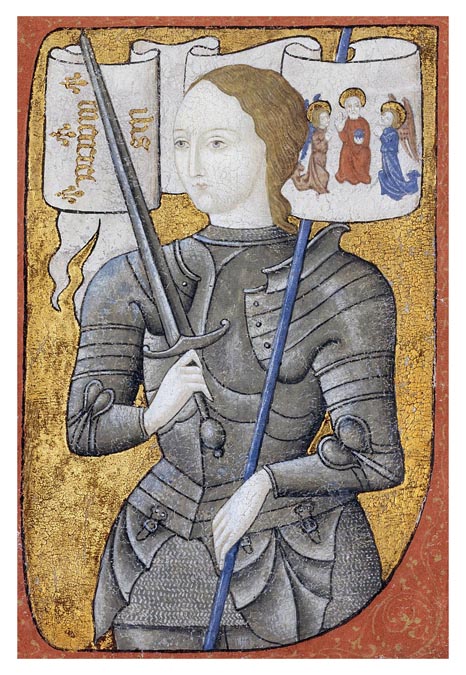
Jeanne d’ Arc was a peasant girl who heard voices, saw visions, raised the siege of Orleans and was burned to death by the English at Rouen. It was said that an English soldier made two pieces of wood into a cross and gave it to her as flames rose round her on the pyre.

Jeanne d Arc began receiving her first celestial commands at Domremy. A child in years she was asked to solve a problem England and France had been struggling with for almost a century. Trying to make an impression on Charles VII was as difficult as “trying to make a permanent dent in a pillow.”
How to deliver a conclusion was to become the mission of the daughter of Jacques d’ Arc, a farmer in the valley of the Meuse. She was a strong, healthy, plain and sturdy, girl. She would have to endure the weight of armour and the long rides across the country. Those rides took her over some three thousand miles. Saint Michael, Saint Catherine and Saint Margaret had picked her, an ignorant able-bodied girl for the “exhaustive demands” they proposed to make on her toughness and her endurance.
She was born around 1412 and died May 30, 1431. She was canonized May 16, 1920 with her feast day celebrated May 30. She became a national heroine of France because she led the French army in the momentous victory at Orleans. Her achievement was a decisive factor in the later awakening of the French national consciousness.
Consider that Joan was 17 years when she took command of the armies of France. A peasant girl in the early 15th Century in charge of a nation’s forces. At 19 she was captured by the British and tried as a witch by a church court. Prior to her 20th birthday, she was burned at the stake.
Quite extraordinary.
She possessed many attributes characteristic of the female visionaries who were a noted feature of her time. She exhibited extreme personal piety, acclaim to direct communication with saints, and a consequent reliance upon individual experience of God’s presence beyond the ministrations of the priesthood and the confines of the institutional church.
Joan left Vaucouleurs February 13, dressed in men’s clothing and accompanied by six men-at-arms.
The dauphin Charles was uncertain whether to even receive her, but after a three-week-examinations by eminent theologians who were allied to the dauphin’s cause, forthwith on March 22 she dictated letters of defiance to the English. Subsequently, Joan had her standard painted with an image of Christ in Judgment and a banner bearing the name of Jesus.
The English capitulated and retreated.
Joan left Orleans May 9 and met Charles at Tours. She urged him to make haste to Reims to be crowned.
In January 1431 statements were taken and were read before the bishop and his assessors. There were 70 charges against her. She was informed that she would be turned over to the secular authorities and only they, not the church, could carry out the death sentence of a condemned heretic.
Some of her last recorded words were her constant response, “I am relying on our Lord. I hold to what I have already said.”

